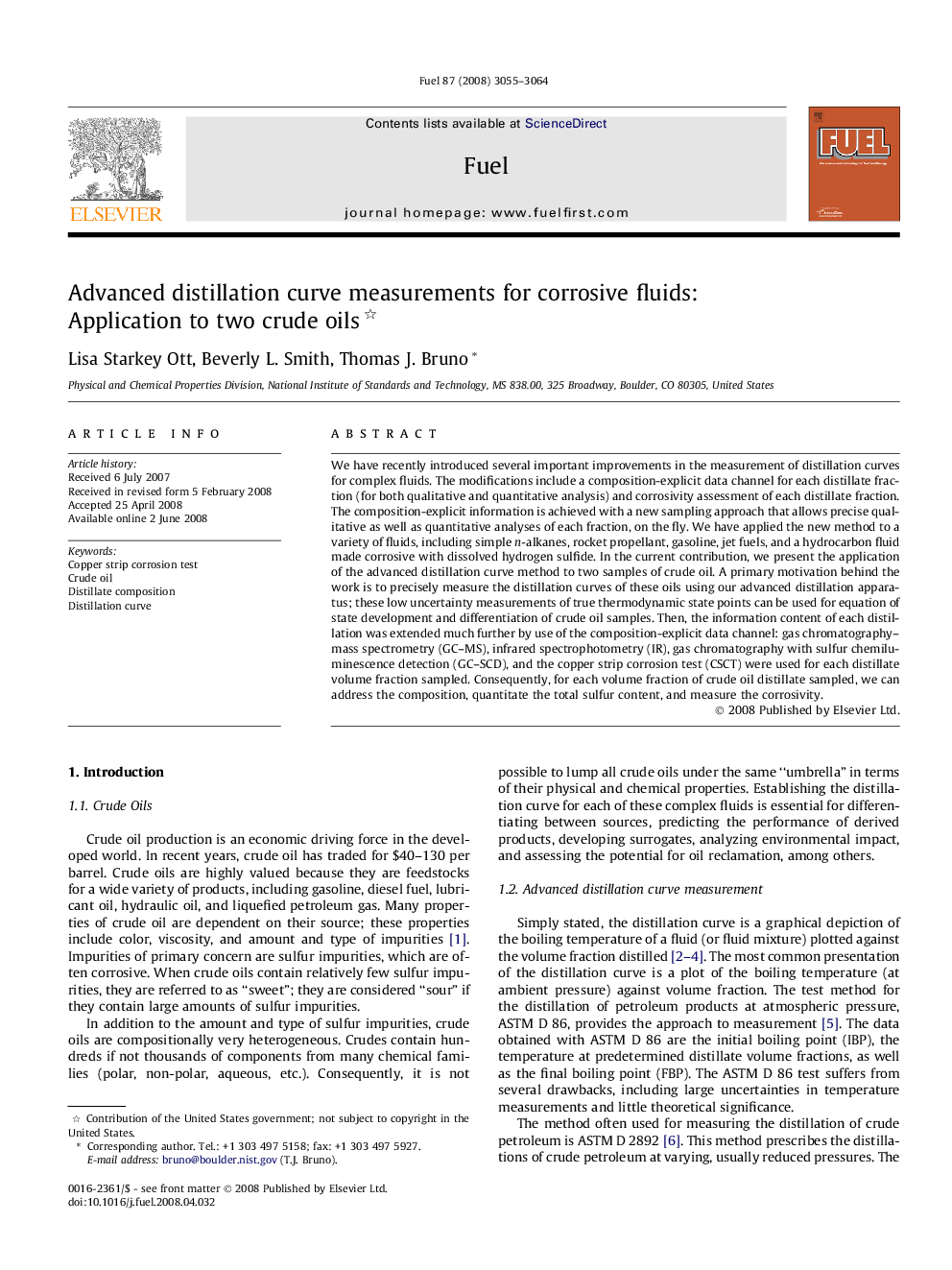| Article ID | Journal | Published Year | Pages | File Type |
|---|---|---|---|---|
| 207541 | Fuel | 2008 | 10 Pages |
We have recently introduced several important improvements in the measurement of distillation curves for complex fluids. The modifications include a composition-explicit data channel for each distillate fraction (for both qualitative and quantitative analysis) and corrosivity assessment of each distillate fraction. The composition-explicit information is achieved with a new sampling approach that allows precise qualitative as well as quantitative analyses of each fraction, on the fly. We have applied the new method to a variety of fluids, including simple n-alkanes, rocket propellant, gasoline, jet fuels, and a hydrocarbon fluid made corrosive with dissolved hydrogen sulfide. In the current contribution, we present the application of the advanced distillation curve method to two samples of crude oil. A primary motivation behind the work is to precisely measure the distillation curves of these oils using our advanced distillation apparatus; these low uncertainty measurements of true thermodynamic state points can be used for equation of state development and differentiation of crude oil samples. Then, the information content of each distillation was extended much further by use of the composition-explicit data channel: gas chromatography–mass spectrometry (GC–MS), infrared spectrophotometry (IR), gas chromatography with sulfur chemiluminescence detection (GC–SCD), and the copper strip corrosion test (CSCT) were used for each distillate volume fraction sampled. Consequently, for each volume fraction of crude oil distillate sampled, we can address the composition, quantitate the total sulfur content, and measure the corrosivity.
